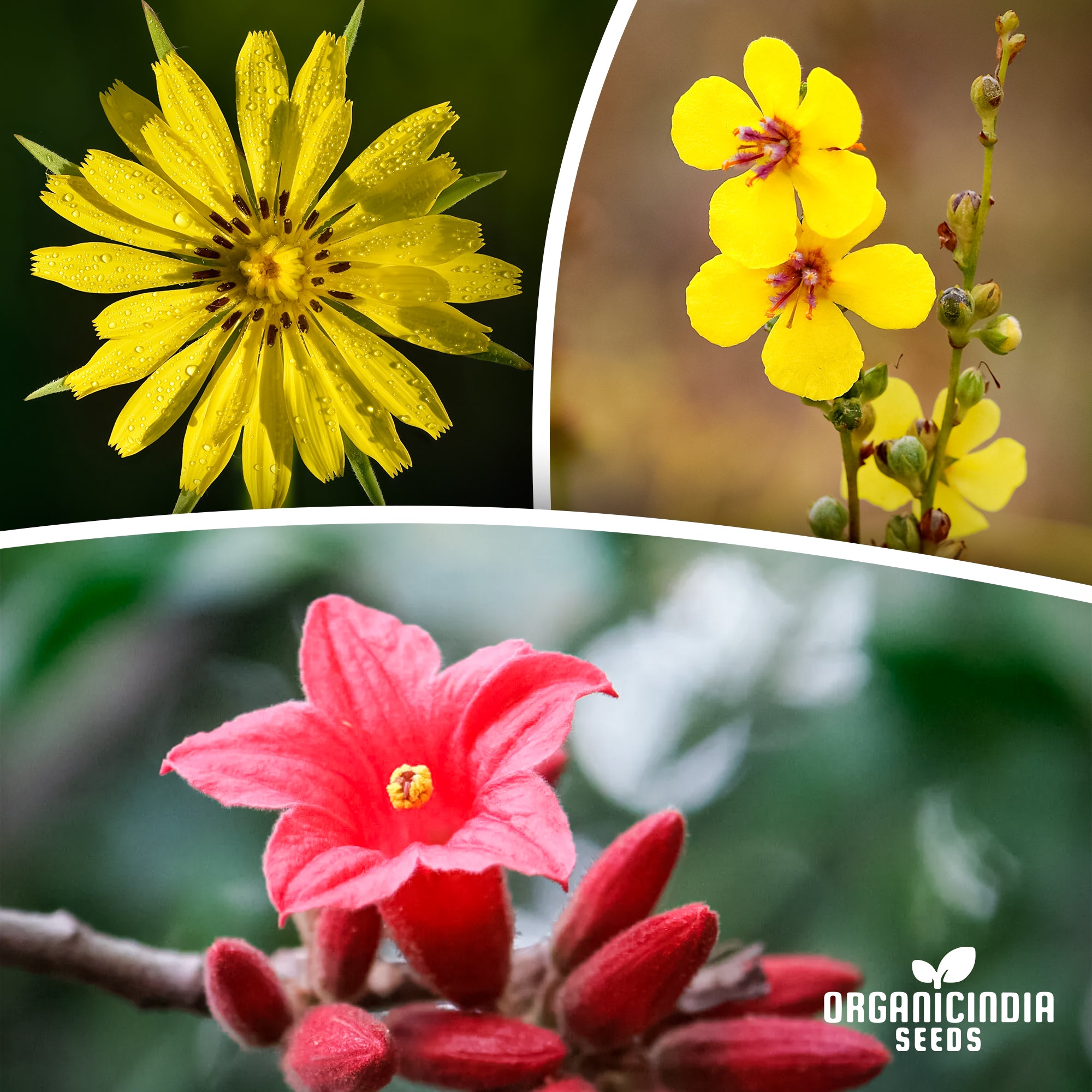Understanding the Male vs. Female Ginkgo Biloba Trees
Ginkgo biloba, often called the "living fossil" tree, is one of the oldest tree species on Earth, with a history that stretches back more than 200 million years. Valued for its unique fan-shaped leaves, striking autumn colors, and resilience in urban environments, Ginkgo trees are popular in parks, streets, and home landscapes. However, one of the critical aspects of Ginkgo biloba that many gardeners need to be aware of is its dioecious nature, meaning that Ginkgo trees are either male or female. Understanding the differences between male and female Ginkgo biloba trees is crucial for proper landscaping and garden planning.
In this blog post, we will explore how to determine the gender of Ginkgo trees, the differences between male and female trees in terms of growth characteristics, and why some gardeners specifically choose to plant male trees over female ones.
Understanding the Gender of Ginkgo Biloba Trees
Ginkgo biloba is one of the few tree species that has distinct male and female trees, known as being "dioecious." In other words, male and female reproductive structures are found on separate individual trees. This unique characteristic makes identifying their gender important, as male and female Ginkgo trees have notable differences, particularly in their reproductive habits.
How to Determine the Gender of Ginkgo Trees
-
Observation of Reproductive Structures: The most definitive way to identify the gender of a Ginkgo tree is to observe its reproductive structures during the appropriate season. Male and female trees develop different types of reproductive organs:
-
Male Ginkgo Trees: The male tree produces small, yellowish catkin-like pollen cones in clusters that hang from the branches. These pollen structures release pollen into the air during spring, allowing fertilization to occur when female ovules are present nearby. Male reproductive structures can easily be observed during the spring months when pollen production is at its peak.
-
Female Ginkgo Trees: Female Ginkgo trees, in contrast, produce ovules that resemble small green plum-like structures, which eventually mature into seeds. After fertilization, these ovules develop into large, fleshy seeds with an outer layer that emits a very distinctive and often unpleasant odor when they fall to the ground.
-
-
Observation of Seeds: Female Ginkgo trees are best identified in the fall when the fertilized seeds mature and drop to the ground. These seeds have a soft, fleshy outer covering that produces a strong, rancid odor, often compared to the smell of rancid butter or vomit. The odor makes the presence of a female Ginkgo tree quite noticeable.
-
Age of the Tree: One of the challenges in determining the gender of a Ginkgo tree is that they do not produce reproductive structures until they reach maturity, which can take anywhere between 20 to 30 years. Until that point, it may be difficult to know whether a Ginkgo is male or female without a detailed botanical analysis, such as genetic testing.
Differences in Growth Characteristics Between Male and Female Ginkgo Trees
While male and female Ginkgo biloba trees share many characteristics, such as their striking fan-shaped leaves and bright golden autumn foliage, there are several key differences between them:
-
Reproductive Characteristics: As mentioned above, the primary difference between male and female Ginkgo trees lies in their reproductive structures. Male trees produce pollen cones, while female trees produce seeds. This reproductive difference has a direct impact on landscape preferences and tree management.
-
Size and Growth Rate: Generally, there is no significant difference in the overall size and growth rate of male and female Ginkgo trees. Both genders are slow-growing and can reach a mature height of 50 to 80 feet with a similar spread. The growth habit of the tree is often pyramidal when young, becoming more open and irregular as it matures.
-
Maintenance Requirements: Male Ginkgo trees are often easier to maintain because they do not produce seeds. Female trees require more attention in landscapes due to the seed drop, which can create litter and a foul odor. The fleshy outer layer of the seeds is not only messy but also slippery, creating potential hazards on walkways.
-
Odor: One of the most notable distinctions between male and female Ginkgo trees is the odor produced by the seeds of female trees. As the seeds drop in the autumn and begin to decay, they produce a strong, unpleasant smell. This characteristic is often the main reason why female Ginkgo trees are less favored in public landscapes and urban areas.
Why Gardeners Prefer Male Ginkgo Trees Over Female Ones
While both male and female Ginkgo biloba trees have their merits, there are several reasons why male trees are preferred by most gardeners and landscapers:
-
Lack of Seed Production: Male Ginkgo trees do not produce the large, smelly seeds that female trees produce each fall. This makes male trees far more desirable for residential and urban planting, as they do not create the litter and odor that can be associated with female Ginkgo seeds. The seed drop from female trees can also attract pests and become a nuisance to clean up.
-
Odor Control: The rancid smell of the female Ginkgo seeds is a significant deterrent for many gardeners. The odor is caused by the butyric acid present in the fleshy part of the seed, which can be highly unpleasant for homeowners and pedestrians. Male trees, being pollen producers, do not create this issue, making them a more attractive choice for ornamental planting in populated areas.
-
Lower Maintenance: Male Ginkgo trees require less maintenance than female trees, which need constant monitoring and cleanup during seed production in the fall. The fleshy seeds can create a slippery mess on sidewalks and driveways, requiring homeowners to clean the area regularly. Male trees eliminate this problem, resulting in a more low-maintenance landscape.
-
Preferred for Urban Environments: In urban settings, male Ginkgo trees are the go-to choice for planting along streets, parks, and public areas. Their durability, pollution tolerance, and aesthetic appeal make them excellent candidates for urban forestry projects. By planting only male trees, city planners can avoid the complaints about the odor and mess caused by female Ginkgo seeds.
-
Allergy Considerations: Some gardeners may consider the pollen produced by male Ginkgo trees to be a drawback, especially for individuals who suffer from allergies. However, the pollen release is typically short-lived and happens only during a brief period in the spring, whereas the seed drop and odor from female trees can last for several weeks in the fall. For this reason, many people still prefer male Ginkgo trees despite the pollen production.
Conclusion
Ginkgo biloba is a fascinating and resilient tree species with a unique evolutionary history, and understanding the differences between male and female Ginkgo trees is crucial for proper garden and landscape planning. Male Ginkgo trees produce pollen cones, while female trees produce seeds that emit a strong, unpleasant odor. Because of the maintenance requirements and unpleasant smell associated with female Ginkgo seeds, male trees are often the preferred choice for ornamental planting, especially in residential and urban areas.
When selecting a Ginkgo tree for your garden or landscape, it's essential to consider the long-term implications of seed production and maintenance. While both male and female Ginkgo trees offer beauty and historical significance, male trees tend to be the more practical and convenient choice due to their lack of seed production and lower maintenance needs. Whether you are looking to add a touch of ancient beauty to your garden or create a resilient urban landscape, the Ginkgo biloba tree is a wonderful addition, provided that you understand its unique characteristics and plan accordingly.



Leave a comment
This site is protected by hCaptcha and the hCaptcha Privacy Policy and Terms of Service apply.